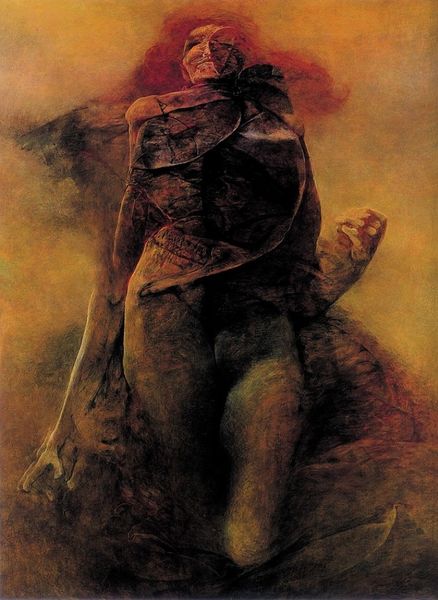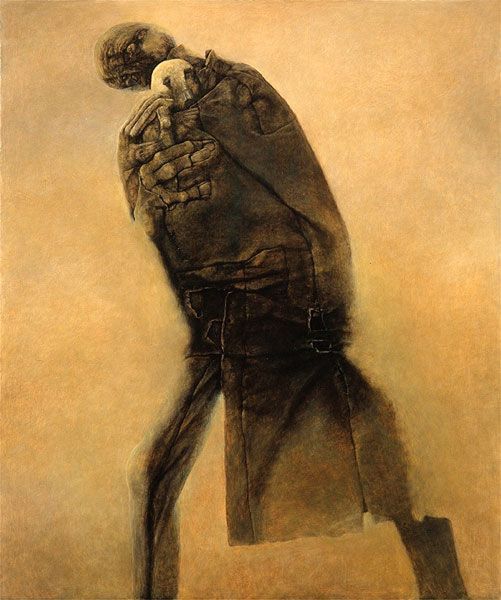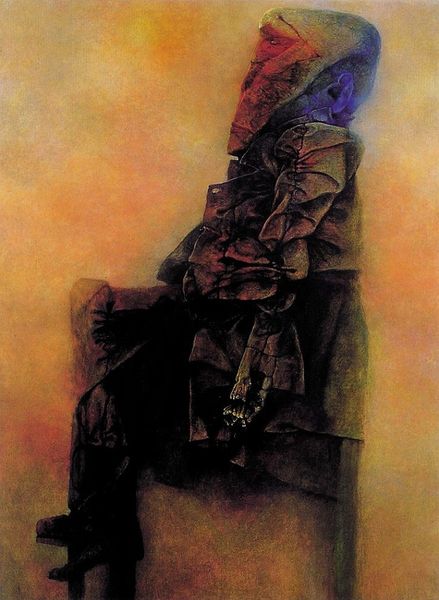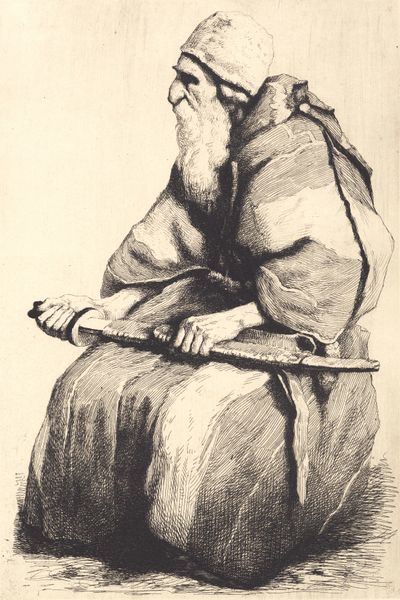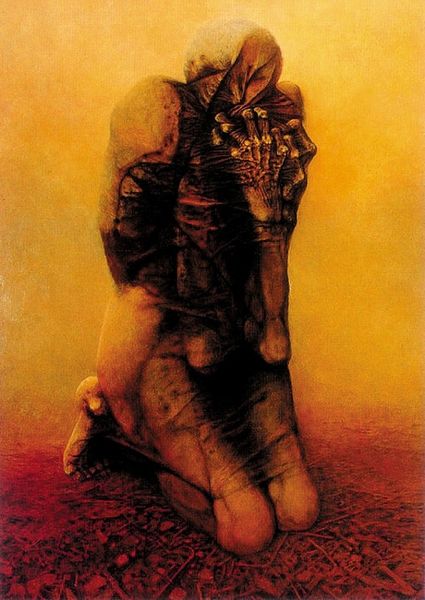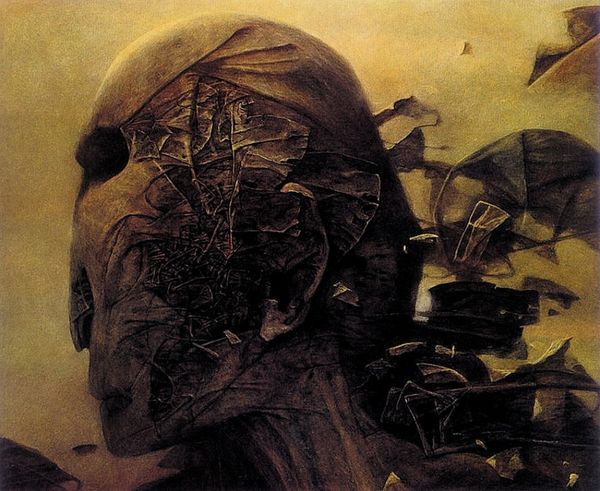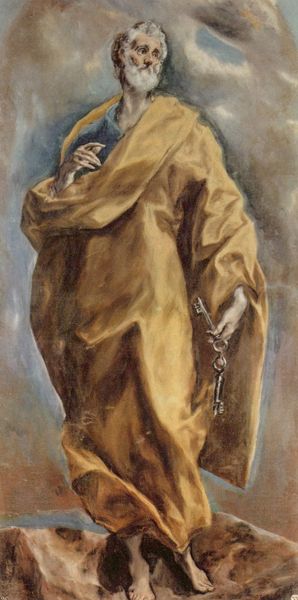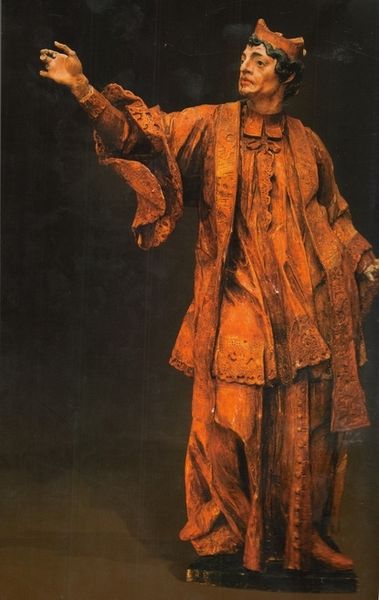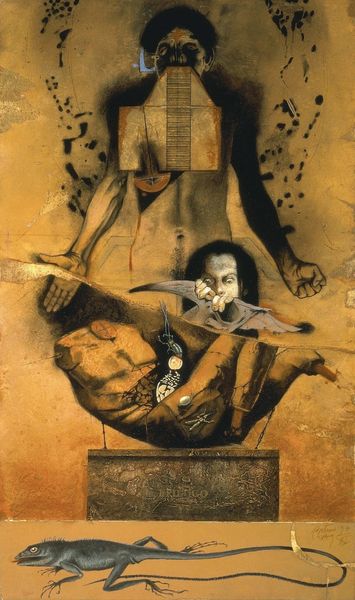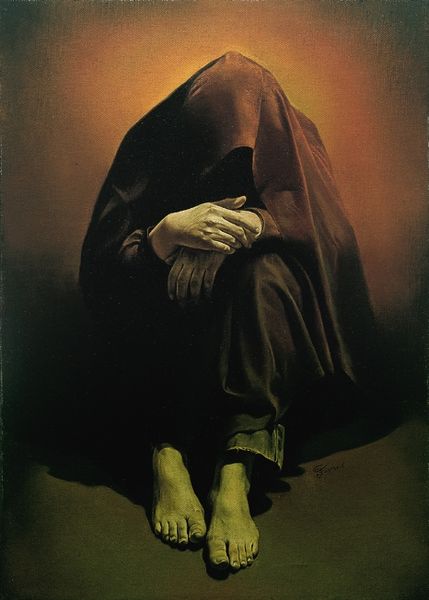
drawing, charcoal
#
portrait
#
drawing
#
landscape
#
charcoal drawing
#
figuration
#
oil painting
#
neo expressionist
#
neo-expressionism
#
charcoal
#
charcoal
Copyright: © The Historical Museum in Sanok (Poland) is the exclusive owner of copyrights of Zdzisław Beksiński's works.
Curator: Immediately, I sense a bleakness, an unrelenting sense of toil. It's sombering. Editor: Indeed. What you’re observing is an untitled charcoal drawing by Zdzislaw Beksinski. While it's difficult to pin down a precise date for its creation, it clearly showcases the artist's distinct Neo-Expressionist approach. Curator: Expressionist, yes, absolutely. Notice how the figures, seemingly fused with their cart and landscape, speak to endurance and perhaps dehumanization, their forms almost skeletal, lost within that swirling landscape. Do you feel the echoes of war or displacement here? Editor: Absolutely. The figures evoke historical traumas, inviting reflection on displacement, alienation, and dehumanization deeply rooted in the 20th-century experience, from wars to forced migrations and systemic oppressions. But it isn't specific, which broadens the critique. Curator: And Beksinski doesn’t give us clear narrative anchors. Instead, the distorted, almost dissolving figures recall archetypes of suffering, loss, and the laborious, cyclical nature of survival. Think of Sisyphus. This drawing reminds me of images that keep surfacing from cultural memory – the wagon representing long journeys of uprooted communities around the world. Editor: Yes, the symbolic weight feels deliberate. Beksinski frequently confronted themes of mortality and existential dread, deeply impacted by his personal tragedies and the dark history surrounding Poland's experiences under authoritarian rule. I think these recurring skeletal forms signify vulnerability. Curator: Consider also the subtle shifts in tonality that further accentuate this vulnerability. He achieves an effect both haunting and immediate. There is beauty even amid the desolation. Is there some sort of twisted grace that you feel here? Editor: That resonates. By foregoing explicit symbolism or details, the work compels us to confront not only historical realities but our shared humanity—how structural violence marks people and landscapes for generations. Beksinski seems to ask if cycles of violence are destined to be self-perpetuating. Curator: In considering our reactions to works like this one, aren't we confronting our own resilience as much as Beksinski's despair? Editor: Perhaps resilience arises from an unflinching look into that void and acknowledging what persists. A hard, necessary question for both history and humanity, don’t you agree?
Comments
No comments
Be the first to comment and join the conversation on the ultimate creative platform.
